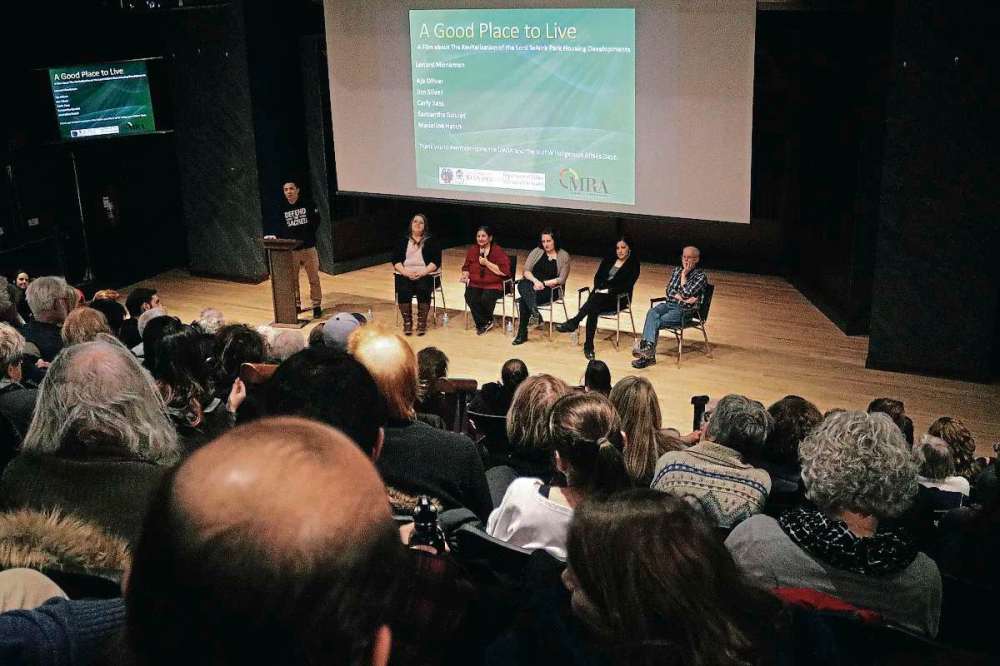A transformation for the better
University of Winnipeg hosts screening of A Good Place to Live
Advertisement
Hey there, time traveller!
This article was published 20/02/2018 (2840 days ago), so information in it may no longer be current.
A Good Place to Live is a film about hope and a thriving community that together protected the place they live against the violence that was engulfing Lord Selkirk Park.

The University of Winnipeg’s department of Urban and Inner-City Studies hosted a free public screening of the film on Feb. 12 that was followed by a question-and-answer session with Lord Selkirk Park community members and professor Jim Silver.
The documentary, directed by Silver and Ian Mauro, portrays how the community transformed this public housing initiative from a place that would be taken over by drugs and gangs to a vibrant and safe place to live.
This transformation wouldn’t have been possible if it didn’t happen from within, said elder and LSP resident Madeline Hatch.
“There’s always a meeting, and we voice ourselves what we want, not what they want, but what the community wants,” she said. “I love it… I’ll never move out of there.”
When Lorraine Delorme lived in the then-brand-new LSP as a child, the community was healthy, and residents were close to each other. In fact, she has many friends from that time who are still living there. She moved away and was surprised to hear so many people were scared of living there due to the rising violence.
“I got a lot of mixed feeling about it,” she told The Times, adding she was glad to watch the documentary and see that things have changed for the better. “It was good there, and we never had problems.”
Delorme’s daughter Shirley Russell worked at Mount Carmel Clinic’s daycare in the 1990s and said the transformation is a reflection of good community development secured by funding.
“Community work is important no matter where you live. Community programming is important if you live in an impoverished neighbourhood or if you live in a wealthy neighbourhood. Community development is a way to live,” she said. “When I started working at Mount Carmel, so many people still knew my mom, and they knew my family, and I always thought, ‘This place is incredible. This place is my mom.’”
Carly Sass, centre supervisor and home visitor at LSP, spoke about how the transformation improved the children’s school readiness. The Lord Selkirk Park Child Care Centre, has been applying an early-years learning program called Abecedarian Approach. This program focuses on children with multiple risk factors and recognizes that these risks could be a barrier to learning.
Because their Early Development Instrument scores were so low, Healthy Child Manitoba partnered up with LPSCCC and University of North Carolina’s senior scientist emeritus Joseph Sparling, who developed the program, to implement it. They are the only child care centre in Canada using this program.
“It promotes their language. It improves their vocabulary for problem-solving and their ability to what for what they need. If they need something, they have the language to ask for that, and that’s so important,” Sass said.
“The children are tested once a year, and the results are through the roof. We see it, the parents see it, and because the parents their children succeeding, it’s encouraging them to go back to school. They want to be a positive role model for their children.”
Hatch said the change was needed for the children living in the complex. She added a transformation like this could happen in every community.
“Everyone is talking about the four races. All I believe is one race. All of us are one to work together.”
The documentary is available on YouTube at https://www.youtube.com/watch?v=Kr6h-m_-1vM&t=235s




